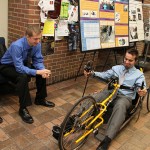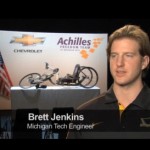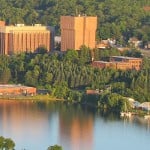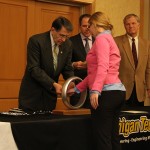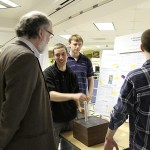Mechanical Engineering – Engineering Mechanics Graduate Seminar: January 31, 2013; 4:00 – 5:00 p.m., Room 112, ME-EM Building
Hugh Blaxill. Managing Director MAHLE Powertrain LLC. Novi, Michigan
Hugh Blaxill is currently Managing Director of MAHLE Powertrain LLC based in Novi, Michigan. MAHLE Powertrain is an engineering consultancy working in the automotive and aerospace fields under the ownership of MAHLE, the well known tier 1 component supplier. Hugh leads a team of specialized engineers in design, development, calibration, controls and diagnostic tools. Hugh was previously Chief Engineer for Research and Development at MAHLE Powertrain (and previously Cosworth) in the UK working on many IC engine research topics such as; downsizing, range extenders, advanced combustion concepts and hardware solutions. Prior to that he worked on a number of production engine development projects for many of the major OEM’s globally. Hugh joined MAHLE from Ricardo where he worked on production diesel engine development. He completed his two degrees at The University of Bath, in the UK.
Topic: Turbulent Jet Ignition: An efficient, clean combustion concept for the future?
In order to meet future global emissions goals, in the short to medium term it will be necessary to continue to improve the fuel consumption of the spark ignited gasoline engine. Gasoline engine downsizing is the dominant technology being implemented in the US and globally. In addition technologies such as variable valvetrains and stratified lean combustion have been implemented by some manufacturers. This presentation considers the application of a homogenous ultra lean combustion system to current and future engine technologies. The ultra lean combustion system is achieved via a high energy Turbulent Jet Ignition system. Turbulent Jet Ignition is an advanced spark initiated prechamber combustion system. The ultra lean combustion system has been shown to achieve high thermal efficiencies and low NOx emissions. Furthermore the improved knock resistance of the system allows, due to the distributed ignition sites, improvements in the compression ratio or a synergy with boosted applications.
